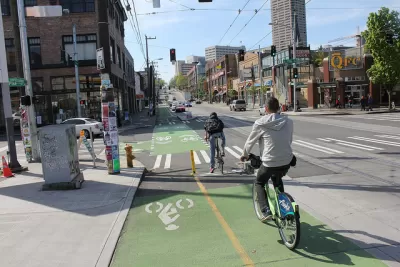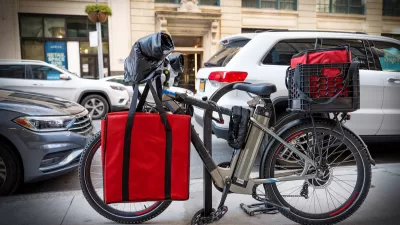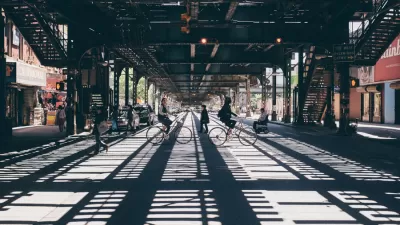As a growing number of devices fall outside of traditional vehicle classes, policymakers must decide how to classify and regulate high-speed e-bikes.

As e-bike manufacturers build increasingly fast and powerful "hyperbikes"—a term coined by Dutch builder VanMoof to describe its V model bike—policymakers must grapple with how to define and regulate the devices. As David Zipper writes,
Motorcycles and mopeds are often subject to an array of laws and restrictions that e-bikes aren’t, such as license plate mandates, helmet requirements, and special driver’s licenses. Such distinctions break down for the new class of high-speed e-bikes. After all, any two-wheeled vehicles traveling at 40 mph likely create comparable risk to the rider as well as other street users.
The e-bike market, which had been growing pre-pandemic, exploded during the last two years as people sought alternatives to public transit.
Regulations, meanwhile, have largely not kept up with the proliferation of new devices that blur the line between bicycles and the higher-powered class of mopeds and motorcycles. Federal rules in the U.S. classify e-bikes as having under 750 watts of power and top speed of 20 miles per hour, according to Zipper, but leave it up to states to regulate registration and insurance requirements.
For now, devices like the 700-watt, 37-mph VanMoof V largely fall outside of existing state and federal statutes. Advocates want to see clearer regulation, expressing concerns that leaving so many vehicles out of designated classes could lead to backlash and blanket bans on e-bikes, cargo bikes, and other forms of new mobility that, despite their usefulness, "don’t fit cleanly into the bike/car dichotomy," writes Zipper.
FULL STORY: As E-Bikes Speed Up, a Policy Dilemma Looms

Planetizen Federal Action Tracker
A weekly monitor of how Trump’s orders and actions are impacting planners and planning in America.

San Francisco's School District Spent $105M To Build Affordable Housing for Teachers — And That's Just the Beginning
SFUSD joins a growing list of school districts using their land holdings to address housing affordability challenges faced by their own employees.

The Tiny, Adorable $7,000 Car Turning Japan Onto EVs
The single seat Mibot charges from a regular plug as quickly as an iPad, and is about half the price of an average EV.

With Protected Lanes, 460% More People Commute by Bike
For those needing more ammo, more data proving what we already knew is here.

In More Metros Than You’d Think, Suburbs are Now More Expensive Than the City
If you're moving to the burbs to save on square footage, data shows you should think again.

The States Losing Rural Delivery Rooms at an Alarming Pace
In some states, as few as 9% of rural hospitals still deliver babies. As a result, rising pre-term births, no adequate pre-term care and "harrowing" close calls are a growing reality.
Urban Design for Planners 1: Software Tools
This six-course series explores essential urban design concepts using open source software and equips planners with the tools they need to participate fully in the urban design process.
Planning for Universal Design
Learn the tools for implementing Universal Design in planning regulations.
Smith Gee Studio
City of Charlotte
City of Camden Redevelopment Agency
City of Astoria
Transportation Research & Education Center (TREC) at Portland State University
US High Speed Rail Association
City of Camden Redevelopment Agency
Municipality of Princeton (NJ)





























